新人教版高中英语选修2Unit 5 Using langauge-Listening教学设计
-
- 页数:5页
- 字数:约 5383 字
- 大小:1M
- 格式:.doc
- 版本:Office2016及以上版本
- 作者:天行健工作室
Unit 5 Using langauge-Listening教学设计
The theme of this section is to learn how to makeemergency calls. Students should learn how to make emergency calls not only inChina, but also in foreign countries in English, so that they can be preparedfor future situations outside the home.The emergency telephone number is avital hotline, which should be the most clear, rapid and effectivecommunication with the acute operator.This section helps students to understandthe emergency calls in some countries and the precautions for making emergencycalls. Through the study of this section, students can accumulate commonexpressions and sentence patterns in this context.

1.Help studentsaccumulate emergency telephone numbers in different countries and learn more aboutfirst aid
2.Guide the students tounderstand the contents and instructions of the telephone, grasp thecharacteristics of the emergency telephone and the requirements of theemergency telephone.
3.Guide students tounderstand the first aid instructions of the operators.
4.Enable Ss to makesimulated emergency calls with their partners in the language they have learned
1. Instruct students to grasp the key information and importantdetails of the dialogue.
2. Instruct students to conduct a similar talk on the relevanttopic.
Step1:Look and discuss:
Match the pictures belowto the medical emergencies, and then discuss the questions in groups.
____________________________ ________________ _____________________________ Qs:
1.Have you ever called 120? What happened?
2.Would you call 120 for the medical emergencies above? how would you describe the situation?
3.What are some other medical emergencies that you would call120 for?
key:
1. bad cut/bleeding
2. sprained ankle
3. heart attack
4. poisoning
5. drowning
Qs;
1. I called 120 when a neighbor had a heart attack.the ambulance came and took her to the hospital timely and saved her life.
2. Yes. I would tell their reactions and injuriesaccording to what I see and feel.
3. car accidents; a stroke; a persons’ suddencollapse etc.
Step2: Whilelistening:Listen to a 999 call in England and answer the questions.
• 1. Why did the boy call 999?
• 2. Who else was in the room with the boy and his grandfather?
• 3. How did the boy describe the old mans condition?
• 4. Among the medical emergencies in Activity 2, which do you think theboys grandfather suffered from?
keys:
• 1. Why did the boy call 999?
• Because his grandfather was having a serious health problem and theyneeded an ambulance.
• 2. Who else was in the room with the boy and his grandfather?
• The boy’s mother
• 3. How did the boy describe the old mans condition?
• "... his breathing has gotten really bad... I think hes dying ...His face looks funny... hes started to breathe again .. his lips are blue ...Hes making strange noises. Hes not breathing again ...hes not breathinganymore!‘
• 4. Among the medical emergencies in Activity 2, which do you think theboys grandfather suffered from?
• Perhaps he suffered from a heart attack.
Step3: Listen again. Number the following instructions theoperator gave.
• __________Press down,twice a second.
• ____________Check to see if there is food in his mouth.
• ________If your mother needs a break, change places.
• ________Put him on his back.
• ________Remove any pillows.
• _______Tell your mum to put her hand in the middle of English, you shouldhis chest.
keys: 5—3—6—1—2--4
Step4:Ask students to listen again and answer:
• 1.How did the operator keep the boy calm?
• By telling him to calm down and calmly asking him questions.
• 2.what did the operator do to make this call a success?
• She asked only the questions necessary to clearly find out the problem,and then she provided short and clear instructions as to what to do.
• 3.What do you think happened after the ambulance arrived?
• The doctors continued to provide CPR, took some blood pressure tests andtemperature checking, while they transported him to the hospital.
您可能喜欢的文档
查看更多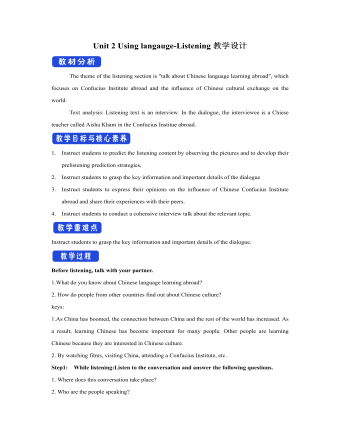
新人教版高中英语选修2Unit 2 Using langauge-Listening教学设计
- 页数:4页
- |大小:139.00KB
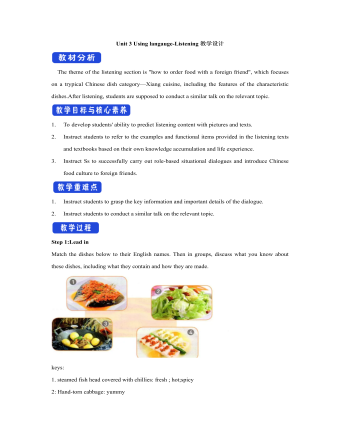
新人教版高中英语选修2Unit 3 Using langauge-Listening教学设计
- 页数:5页
- |大小:684.50KB
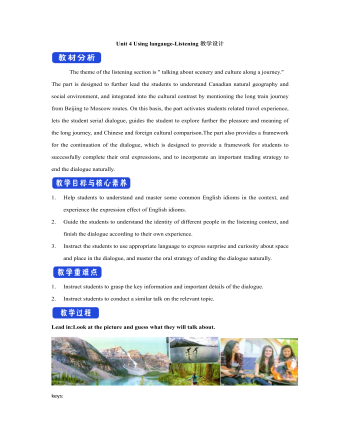
新人教版高中英语选修2Unit 4 Using langauge-Listening教学设计
- 页数:3页
- |大小:744.00KB
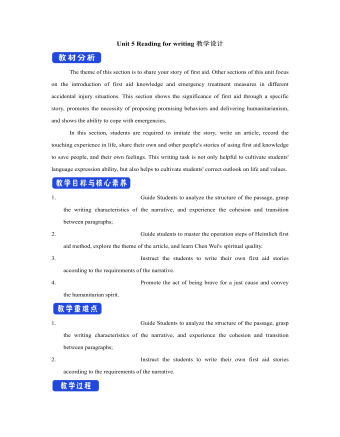
新人教版高中英语选修2Unit 5 Reading for writing教学设计
- 页数:4页
- |大小:317.50KB
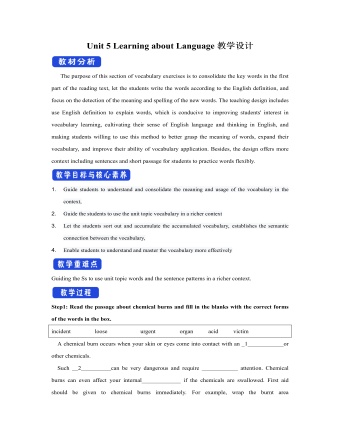
新人教版高中英语选修2Unit 5 Learning about Language教学设计
- 页数:4页
- |大小:138.00KB
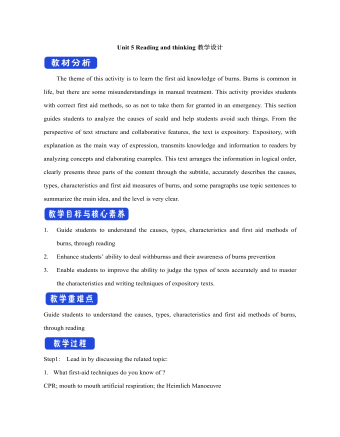
新人教版高中英语选修2Unit 5 Reading and thinking教学设计
- 页数:4页
- |大小:129.50KB
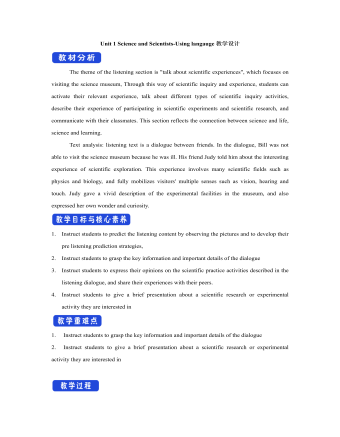
新人教版高中英语选修2Unit 1 Science and Scientists-Using langauge教学设计
- 页数:5页
- |大小:999.00KB
热门课件教案
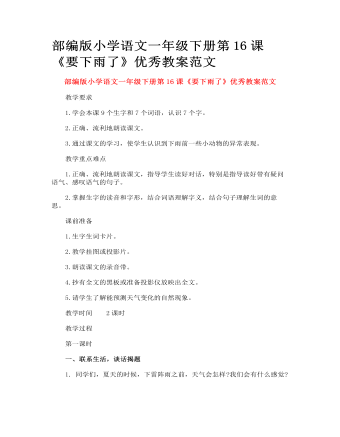
部编版小学语文一年级下册第16课《要下雨了》优秀教案范文
- 页数:4页
- |大小:19.94KB
- 课件教案
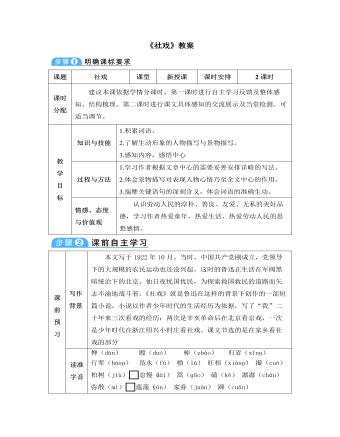
部编版语文八年级下册《社戏》教案
- 页数:8页
- |大小:340.00KB
- 课件教案

精选高中生期末评语
- 页数:42页
- |大小:7M
- 课件教案
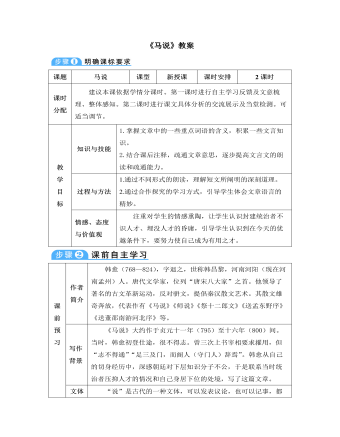
部编版语文八年级下册《马说》教案
- 页数:8页
- |大小:367.50KB
- 课件教案
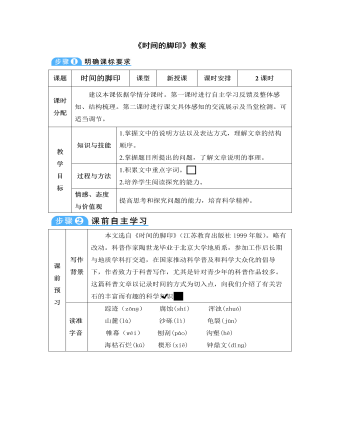
部编版语文八年级下册《时间的脚印》教案
- 页数:4页
- |大小:511.50KB
- 课件教案
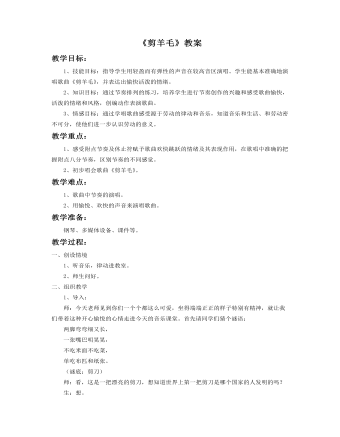
《剪羊毛》教案
- 页数:3页
- |大小:33.50KB
- 课件教案
今日更新

精选高中生期末评语
- 页数:42页
- |大小:7M

××县招商局2024年上半年工作总结
- 页数:12页
- |大小:142.54KB

“四零”承诺服务创建工作总结
- 页数:5页
- |大小:39.83KB
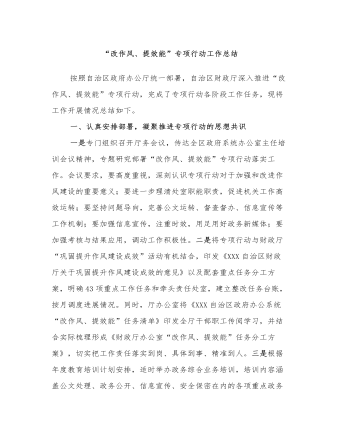
“改作风、提效能”专项行动工作总结
- 页数:6页
- |大小:139.05KB
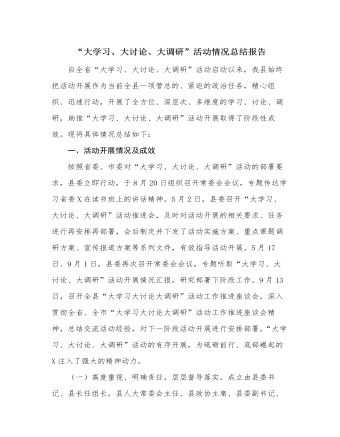
“大学习、大讨论、大调研”活动情况总结报告
- 页数:7页
- |大小:26.12KB
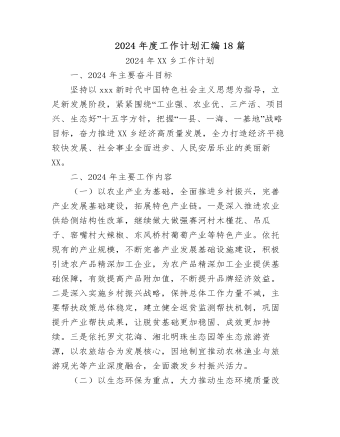
2024年度工作计划汇编(18篇)
- 页数:72页
- |大小:196.93KB





